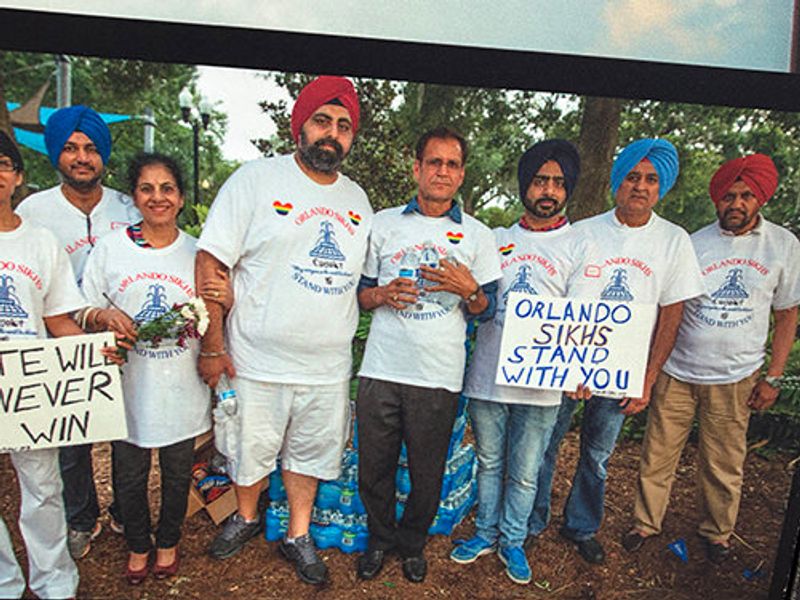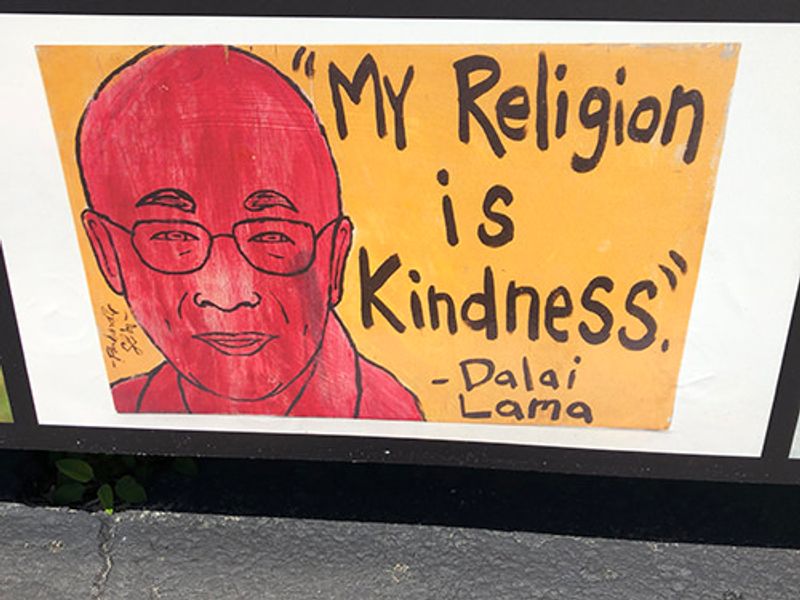Blog
This Memorial Day, remember the gun industry's war on America
Orlando…Until I arrived here in rainy central Florida, I almost forgot that two years ago on June 12, Orlando was the scene of the worst case of mass gun death in U.S. history.
The Pulse nightclub, June 12, 2016. Do you even remember?

We’ve had so many other shooting incidents since then. Las Vegas overtook Orlando to become No.1. And then there was Parkland, Florida. And more recently, Santa Fe, Texas.
Gun violence happens so often, we forget the past too quickly, too easily.
That’s why we need to take time on Memorial Day.
For the soldiers, and our war dead, sure. Many of us remember them every day, anyway.
But let’s not forget those who are lost to the gun industry’s war on America.
The industry profits on regular Americans gunned down senselessly. Individually and en masse.
We seem to forget them all as soon almost as soon as it happens.
That’s why we need to expand our sense of Memorial Day. Too many people die in the war that’s taking place right under our noses.
ORLANDO’S FRINGE HAS A PULSE
I’m a good example.
I’m still in Orlando for the 28th Orlando Fringe Festival, the largest theatre festival of its kind in the U.S. Among the stories in my “Amok Monologues: All Pucked Up” is the shooting death of my cousin, Stephen, who I saw as the second coming of my father.
Stephen, an immigrant from the Philippines, was eight years old when he arrived in San Francisco. He practically traced my father’s footsteps and then exceeded them. He received his B.A. in International Relations from San Francisco State University.
But the story diverges before then. Stephen was shot and killed on May 4, 2014.
He received his degree posthumously.
Stephen was celebrating his impending graduation and was drunk one night. He went back to the tenement apartment on Mission Street in San Francisco, where he had lived for 18 years in one room with his family.
He took the elevator to his apartment on the 5th floor. But he got off on the 3rd.
When you’re drunk, it all looks the same. But it was the wrong floor, and the wrong apartment. And while there was no sign of a struggle or breaking or entering, he was inside an apartment that was not his.
The resident, a retired security guard, had a gun. And he knew the law. The Castle Doctrine says if an intruder comes into your home, you can shoot to kill. No questions asked. It’s a slam dunk self-defense case.
And that’s how my cousin’s life ended too soon. A single bullet. A mistake, sure. There was no recourse.
I’ve lived out the drama as part of my show, which I performed at the Orlando Fringe Festival for the past two weeks.
But it’s one thing to relive one’s personal story of senseless gun violence on the stage.
It’s quite another thing to visit the scene of what had been the worst mass shooting in U.S. history.
Until I drove past the Pulse nightclub, I had forgotten it all took place a few miles from where I was staying.
In 2016, Orlando’s Pulse nightclub had been the worst mass shooting in U.S. history, with 49 people killed and 53 injured.
This week, I took a break from the Fringe Festival to see the memorial the community is working on to honor the victims.
It was heart-wrenching.
If you have experienced gun violence through a friend or close family relative, just multiply that by 49.
What’s there now is not quite finished.
From the news, you’ll know the scene from the video clips of people running from the shooting.
The building is still there. And while there was talk of tearing it down, the overwhelming sentiment is that it should be a monument to the event, the victims, and the community.
What will be erected should be done by 2020, said Barbara Poma, the owner of the nightclub at a Fringe event talk.
In the interim, the sign is there as a haunting reminder.
Under it, a translucent pillar wall has been set up for people to leave a mark that they were there.

Surrounding the club is a wall of photos and inscriptions that remind us that the club, which was heavily patronized by a young, ethnic, mostly LBGTQ crowd, represented one of the most diverse groups imaginable.
The carnage of the Pulse elicited an equally diverse response.

Among Asian Americans, there are representatives of the Sikh community.
A bona fide Asian is presented, the Dalai Lama.

And there are groups representing Arabs and Muslims.

One sign reads: “I don’t care if you’re black, white, latin, Asian, Indian, muslim, straight, bisexual, gay, lesbian, religious, atheist, republican, democrat, rich or poor. If you are nice to me, I will be nice to you. Simple as that "
That’s a notice that is as diverse as it gets. It’s signed with a rainbow heart shape and the phrase “Orlando Strong.”

A foundation has been set up to complete a memorial museum project. But already, it’s clear the emphasis will not be on anger or grief. Nor will the memorial be glum and solemn.
Instead, the message is on unity, love, strength, acceptance, hope.
It’s going to be a memorial for the living.
Already in the interim it’s that; your guide for living a life of tolerance with a respect for diversity. We can remember the dead. But the future is up to us.
We just don’t seem to be learning fast enough.
Memorials that require the living to take real action may help.
So should a long weekend that may give us the time to ponder the horror of our domestic war, the one right under our noses fueled by the gun lobby, and ignored by the politicians.

Emil Guillermo is an independent journalist/commentator. Updates at www.amok.com. Follow Emil on Twitter, and like his Facebook page.
The views expressed in his blog do not necessarily represent AALDEF’s views or policies.
Read Emil's full bio →